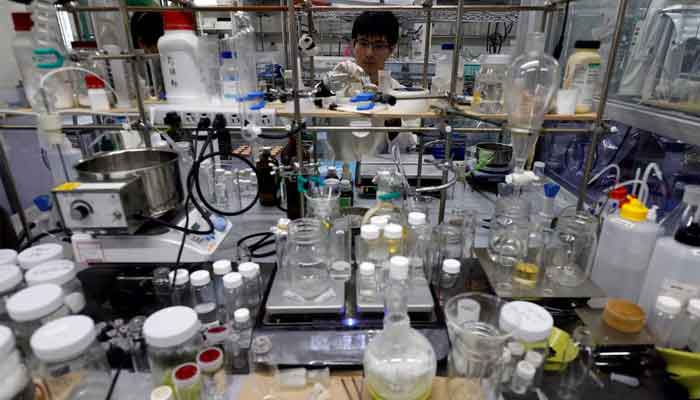Researchers in Japan have engineered a groundbreaking plastic material that swiftly dissolves in seawater within a matter of hours, presenting a promising solution to the pervasive modern-day scourge of plastic pollution in oceans and its detrimental impact on wildlife. While scientists have long explored biodegradable plastics, researchers from the RIKEN Centre for Emergent Matter Science and the University of Tokyo assert that their innovative material decomposes significantly faster and leaves no discernible residue.
During a demonstration at a lab in Wako city, near Tokyo, the team showcased a small fragment of the plastic vanishing in a container of salt water after approximately an hour of agitation. Although the team has not yet disclosed specific commercialization plans, project lead Takuzo Aida indicated that their research has garnered substantial interest, including from entities within the packaging sector.
Scientists globally are in a race to develop innovative solutions to the escalating plastic waste crisis, an endeavor actively championed by awareness campaigns such as World Environment Day, observed on June 5. The UN Environment Programme has projected that plastic pollution is set to triple by 2040, contributing an additional 23-37 million metric tonnes of waste to the world’s oceans annually. “Children cannot choose the planet they will live on. It is our duty as scientists to ensure that we leave them with the best possible environment,” Aida stated.
Aida explained that the new material possesses comparable strength to petroleum-based plastics but undergoes complete decomposition into its original components upon exposure to salt. These components can then be further processed by naturally occurring bacteria, thereby preventing the generation of harmful microplastics that can adversely affect aquatic life and infiltrate the food chain. He further noted that since salt is also present in soil, a piece approximately five centimeters (two inches) in size disintegrates on land after more than 200 hours.
The material can be utilized similarly to conventional plastic when coated, and Aida revealed that the team’s current research is concentrated on identifying the most effective coating methods. He added that the plastic is non-toxic, non-flammable, and does not emit carbon dioxide.



